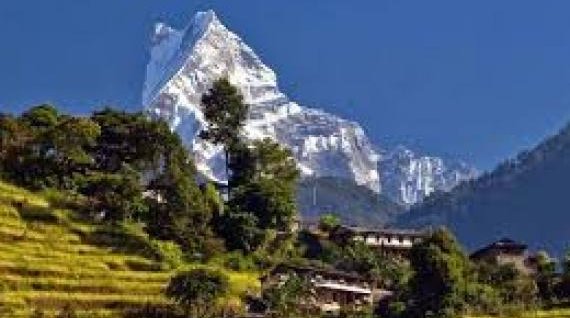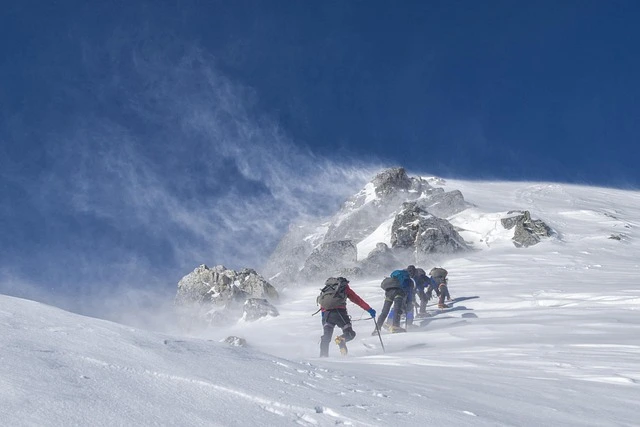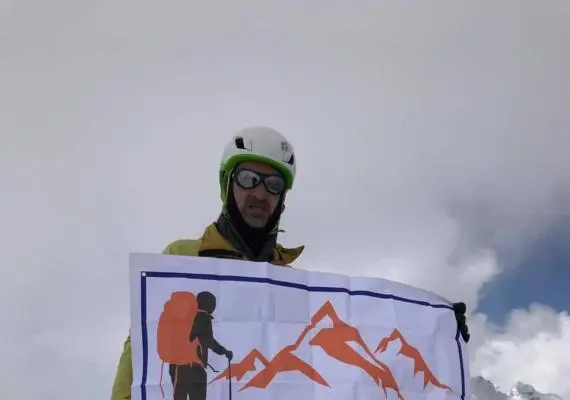The morning mist parts like a curtain, revealing snow-capped Annapurna peaks that seem close enough to touch. This magical moment awaits on the Pokhara to Dhampus hike, where ancient Gurung villages meet Himalayan grandeur in perfect harmony.
As 2026 ushers in a new era of sustainable travel, this Dhampus day hike stands out as Nepal's perfect blend of accessibility and authenticity. Whether you're seeking your first taste of Himalayan trekking or craving cultural immersion beyond tourist hotspots, this Annapurna views trek delivers experiences that resonate long after you've returned home.
Having guided countless travelers along these trails, I've witnessed how this journey transforms perspectives. The Gurung village trail isn't just about reaching a destination – it's about discovering Nepal's living heritage while surrounded by some of Earth's most spectacular mountain scenery.
Why Hike to Dhampus?
The Dhampus village hike captivates travelers for reasons extending far beyond Instagram-worthy mountain views. This trek represents Nepal's essence – where warm hospitality meets natural splendor in ways that touch your soul.
Unlike crowded tourist trails, this cultural trekking Nepal experience maintains authentic charm. Gurung communities continue traditional lifestyles, offering glimpses into customs unchanged for generations.
The accessibility factor makes this Pokhara short trek particularly appealing. You don't need mountaineering experience or weeks of preparation – just reasonable fitness and an adventurous spirit.
Here's what makes Dhampus unmissable:
- 360-degree Himalayan views – Annapurna South, Hiunchuli, and the iconic Machhapuchhre dominate horizons
- Living Gurung culture – Experience authentic village life, traditional architecture, and warm hospitality
- Perfect day hike distance – Achievable for most fitness levels without overnight camping
- Rhododendron forests – Spring blooms create tunnels of red and pink flowers
- Sustainable tourism model – Community-run homestays directly benefit local families
- Photography paradise – Golden hour light transforms mountains into glowing masterpieces
Recent travelers rave about the experience on social media. One X post describes it as "where Nepal's heart beats strongest – stunning mountain views matched only by villagers' genuine smiles."
The Himalayan panorama trek aspect becomes apparent within minutes of leaving Pokhara's bustle. Each step upward reveals new mountain perspectives, building anticipation for summit revelations.
Trail Overview and Difficulty
Understanding the Pokhara to Dhampus trail map helps set realistic expectations for your adventure. Two main routes offer different experiences while reaching the same spectacular destination.
The Phedi to Dhampus route presents the more challenging option, climbing steeply through forests from 1,130m to Dhampus at 1,750m. This traditional path rewards effort with intimate forest experiences and gradual view reveals.
Alternatively, the Kande hiking start provides gentler gradients, beginning at 1,770m elevation. This route passes through Australian Camp, adding another viewpoint to your journey.
Trail Statistics:
- Total distance: 8-12 km depending on route choice
- Elevation gain: 620m from Phedi, 200m from Kande
- Duration: 2-6 hours based on fitness and photo stops
- Trail type: Stone steps, forest paths, some village roads
- Difficulty rating: Easy to moderate
- Best starting time: 7:00 AM for day hikes, 3:00 PM for sunset views
The Dhampus hike duration varies significantly between hikers. Athletic individuals might power through in 2 hours, while leisurely trekkers enjoying frequent breaks need 5-6 hours.
Trail conditions remain excellent throughout most seasons. Local communities maintain paths regularly, understanding their importance for tourism income.
For those seeking the best route Pokhara to Dhampus trail, I recommend Phedi ascent with Kande descent. This combination maximizes scenery variety while providing easier downhill return.
Recent improvements include new rest stations every 30-45 minutes. These covered platforms offer benches and sometimes basic refreshments during peak season.
The Phedi to Dhampus uphill section challenges some visitors initially. Stone steps can feel relentless, but regular breaks reveal increasingly spectacular views as motivation.
Monsoon considerations matter for easy hikes Pokhara planning. June through August brings slippery conditions and leeches, though experienced guides know techniques for comfortable rainy season trekking.
Best Views and Attractions Along the Way
The Annapurna views Dhampus begin teasing hikers just 45 minutes into the climb. Each switchback and clearing offers new perspectives on the world's most beautiful mountain range.
Machhapuchhre from Australian Camp provides the first major "wow" moment. The sacred fishtail peak dominates skylines, its distinctive summit forbidden to climbers by religious decree.
Photography enthusiasts discover paradise at multiple viewpoints. Morning light bathes peaks in alpenglow, while afternoon brings dramatic cloud formations dancing around summits.
Prime Photography Locations:
- Forest clearing viewpoint (1 hour up) – First Annapurna glimpses through trees
- Australian Camp platform – Classic Machhapuchhre shots with prayer flags
- Dhampus village entrance – Traditional houses framing mountain backdrops
- Sunset viewpoint – Western platform for golden hour magic
- Gurung museum rooftop – 360-degree panorama including valleys
- Traditional swing spot – Instagram-famous location with mountain views
The Dhaulagiri panorama emerges clearly from Dhampus's western edge. This massive peak, Nepal's seventh highest, often gets overshadowed by closer Annapurna giants.
Village attractions complement natural beauty. Traditional Gurung houses showcase intricate woodwork and stone construction techniques passed through generations.
Don't miss the small Buddhist monastery near the village center. Morning prayers create atmospheric moments as chants blend with mountain breezes.
The sunset Sarangkot hike extension adds another dimension for ambitious hikers. This additional 2-hour trek rewards with Pokhara valley views and different mountain angles.
Wildlife spotting opportunities surprise many visitors. Langur monkeys inhabit forests, while colorful birds like sunbirds and minivets provide movement among rhododendrons.
For best photography spots Australian Camp, arrive 30 minutes before sunset. The interplay of fading light on snow peaks while valleys darken creates compelling contrasts.
Cultural photo opportunities abound in village streets. Elderly Gurung women in traditional dress often sit outside homes, their weathered faces telling stories of mountain life.
Phewa Lake nearby views emerge during descent, adding another scenic element. The lake's blue waters contrast beautifully with surrounding green hills.
Best Time to Hike in 2026
Choosing best time Dhampus hike significantly impacts your experience quality. Each season offers unique advantages, though spring and autumn remain most popular.
The Pokhara trekking season traditionally peaks October-November and March-May. These months combine clear skies, comfortable temperatures, and stable weather patterns.
Spring 2026 promises exceptional conditions. Climate patterns suggest earlier rhododendron blooms, potentially starting late February in lower elevations.
Seasonal Breakdown:
Spring (March-May)
- Pros: Rhododendron forests in full bloom, warm days, clear mornings
- Cons: Afternoon clouds common, busier trails
- Temperature: 15-25°C daytime, 5-15°C morning/evening
- Special feature: Spring rhododendrons create fairytale forest scenes
Autumn (September-November)
- Pros: Crystal-clear mountain views, stable weather, festivals
- Cons: Cooler temperatures, highest tourist numbers
- Temperature: 10-20°C daytime, 0-10°C morning/evening
- Special feature: Post-monsoon clarity reveals distant peaks
Winter (December-February)
- Pros: Fewer tourists, snow-capped peaks at their best
- Cons: Cold mornings, shorter daylight hours
- Temperature: 5-15°C daytime, -5-5°C morning/evening
- Special feature: Winter Dhampus views include dramatic snow lines
Monsoon (June-August)
- Pros: Lush green landscapes, authentic village life
- Cons: Clouds obscure views, slippery trails, leeches
- Temperature: 20-28°C daytime, 15-20°C morning/evening
- Special feature: Monsoon trail tips essential for comfort
The eternal sunrise vs sunset Dhampus views debate depends on priorities. Sunrise offers clearer peaks but requires pre-dawn starts or overnight stays. Sunset provides warmer light and relaxed timing.
For 2026, consider shoulder seasons gaining popularity. Late September and early March offer excellent conditions with fewer crowds.
Guided Tours vs. Self-Guided Hikes
The guided Dhampus hike versus independent trekking decision shapes your entire experience. Both approaches offer distinct advantages worth considering carefully.
Pokhara day tour packages range from budget group tours (USD 70-100) to premium private experiences (USD 300-390). Price variations reflect service levels, group sizes, and inclusions.
Self-guided hiking costs significantly less – essentially just transportation (USD 30-50) and meals (USD 10-20). However, you'll miss cultural insights and local connections guides provide.
Guided Tour Advantages:
- Cultural interpretation – Guides explain village customs and traditions
- Language assistance – Communication with non-English speaking villagers
- Safety assurance – Experienced leaders handle any emergencies
- Logistics handled – Transportation, permits, and timing organized
- Hidden spots revealed – Access to viewpoints unknown to guidebooks
- Photography assistance – Guides know optimal timing and angles
Self-Guided Benefits:
- Budget-friendly – Save USD 50-350 per person
- Flexible schedule – Start and finish at your preferred pace
- Solitude options – Escape crowds on less-traveled paths
- Spontaneous exploration – Investigate interesting detours freely
- Personal challenge – Navigate independently for added adventure
- Extended stays – Linger in villages without group pressure
The overnight Dhampus stay option transforms day hikes into cultural immersions. Homestays cost USD 20-40 including meals, providing authentic village experiences.
Dhampus trekking cost considerations extend beyond guide fees. Factor in transportation, meals, tips, and potential homestay expenses for accurate budgeting.
For affordable guided tours Dhampus Pokhara, join scheduled group departures. Himalayan Hero's shared tours maintain quality while reducing individual costs through economies of scale.
The 2026 trend toward meaningful travel makes guided cultural experiences increasingly valuable. Knowledgeable guides transform simple walks into profound cultural exchanges.
Safety and Preparation Tips
Hiking safety Dhampus begins with honest fitness assessment. While technically easy, continuous uphill climbing challenges those unprepared for sustained effort.
Knowing what to wear Pokhara trek prevents common discomforts. Layer systems work best, accommodating temperature variations between shaded forests and exposed viewpoints.
The most overlooked preparation? Mental readiness. Steep sections test determination more than physical capability. Positive mindsets overcome temporary discomforts.
Essential Packing List for Dhampus Hike:
- Sturdy hiking boots – Ankle support helps on uneven steps
- Moisture-wicking layers – Temperature varies dramatically with elevation
- Rain protection – Afternoon showers possible even in dry season
- Sun essentials – Hat, sunglasses, SPF 30+ sunscreen
- Water capacity – Minimum 2 liters per person
- Energy snacks – Local shops limited on trail
- Basic first aid – Blisters most common issue
- Trekking poles – Helpful for knee protection on descents
- Headlamp – Essential for early starts or late returns
- Cash reserves – Small bills for village purchases
Beginner tips Dhampus success starts with pacing. The temptation to rush uphill exhausts hikers quickly. Steady, sustainable rhythm wins over speed.
Altitude considerations remain minimal at Dhampus elevation. However, Pokhara sits at 820m, so the 1,750m summit represents meaningful elevation gain.
Mobile connectivity surprises many visitors – coverage remains strong throughout trails. Download offline maps as backup, but trail navigation app options work reliably.
For sustainable packing list considerations, avoid single-use plastics. Refillable bottles and reusable bags support village environmental efforts.
Leech protection during monsoon requires preparation. Socks over trouser bottoms, salt packets, and regular checks prevent unpleasant surprises.
Recent safety improvements include emergency evacuation protocols. Local communities established communication systems for rapid response when needed.
Pokhara Dhampus trail safety tips emphasize group awareness. Solo hikers should inform accommodations about plans and expected return times.
Weather changes rapidly in mountains. Pack warm layers even during seemingly perfect conditions – afternoon clouds bring temperature drops.
Cultural and Historical Significance
Gurung culture Dhampus represents living heritage rarely experienced so accessibly. This ethnic group's traditions survived centuries through geographic isolation and fierce independence.
The village's strategic location historically controlled trade routes between Tibet and India. This positioning brought prosperity while maintaining cultural integrity.
Nepal village tourism in Dhampus follows community-based models. Rather than outside developers, local families own and operate homestays, ensuring benefits remain within communities.
Cultural Highlights:
- Traditional architecture – Stone houses with carved wooden windows
- Gurung museum – Exhibits showcasing customs, dress, and history
- Cultural performances – Traditional dances during festivals and special occasions
- Handicraft demonstrations – Women weaving traditional fabrics
- Agricultural practices – Terraced farming techniques unchanged for generations
- Religious blend – Buddhist and Hindu influences creating unique practices
The ethnic villages Pokhara region showcases Nepal's diversity within small geographic areas. Each community maintains distinct languages, customs, and architectural styles.
Cultural immersion trek opportunities extend beyond observation. Participate in daily activities like grain grinding or vegetable harvesting when invited by families.
The Annapurna conservation area designation brings both benefits and responsibilities. Entry fees support environmental protection while limiting development impacts.
Modern challenges face traditional communities. Young people increasingly seek urban opportunities, threatening cultural continuity. Tourism provides economic incentives for cultural preservation.
Homestay experiences offer deepest cultural connections. Sharing meals with families, you'll learn about customs through stories rather than guidebooks.
Recent initiatives promote women's empowerment through tourism. Female-run homestays and handicraft cooperatives provide independent income sources.
For authentic cultural experiences Gurung Dhampus, visit during festivals. Dashain and Tihar celebrations showcase traditions at their most vibrant.
Dhampus vs. Other Pokhara Hikes
Understanding Dhampus vs Sarangkot hike differences helps choose suitable adventures. Both rank among best short hikes Pokhara but serve different preferences.
Sarangkot focuses purely on sunrise mountain views and paragliding activities. Dhampus adds cultural depth through village experiences and diverse trail environments.
The Australian Camp alternative essentially forms part of the Dhampus trail. Many hikers visit both, though Australian Camp alone offers shorter, easier option.
Comparison Matrix:
Dhampus Hike:
- Duration: 4-8 hours full circuit
- Cultural element: Strong – authentic village life
- View quality: Excellent – 360-degree panoramas
- Trail variety: Forest, villages, viewpoints
- Family suitability: Good for ages 8+
- Cost range: USD 70-390 guided
Sarangkot Hike:
- Duration: 3-5 hours round trip
- Cultural element: Limited – mainly viewpoint
- View quality: Excellent – sunrise specialty
- Trail variety: Direct ascent, less diverse
- Family suitability: Moderate – steeper sections
- Cost range: USD 50-250 guided
Ghandruk Trek:
- Duration: 2-3 days minimum
- Cultural element: Very strong – larger village
- View quality: Spectacular – closer to Annapurna
- Trail variety: Extensive – multiple ecosystems
- Family suitability: Challenging – longer distance
- Cost range: USD 150-500 guided
For family-friendly Nepal hikes, Dhampus wins through balanced difficulty and engagement variety. Children enjoy village interactions alongside natural beauty.
The Ghandruk trek comparison reveals Dhampus's key advantage – accessibility. Similar cultural experiences require just one day versus multiple-day commitments.
Recent trail developments favor Dhampus. New rest stops, improved signage, and safety features surpass infrastructure on alternative routes.
Dhampus vs Ghandruk for families considerations include overnight logistics. Dhampus works perfectly as day trip, while Ghandruk demands camping or lodge stays.
Value propositions clearly favor Dhampus for time-limited visitors. Maximum cultural and natural experiences pack into manageable single-day adventures.
Conclusion
The Pokhara to Dhampus hike embodies everything magical about Nepal trekking – accessible adventure, genuine cultural encounters, and Himalayan views that redefine spectacular. This Pokhara short trek proves you don't need extreme fitness or weeks of time to experience Nepal's essence.
As 2026 embraces sustainable travel, this Gurung village trail showcases how tourism can preserve traditions while supporting local communities. Every homestay booking and guided tour directly benefits families maintaining these mountains paths for generations.
Whether you're drawn by photography opportunities, cultural immersion, or simply the challenge of reaching new heights, Dhampus delivers experiences surpassing expectations. The memories created here – from sunrise alpenglow to sharing dal bhat with Gurung families – become stories you'll tell for years.
Ready to embark on your own Dhampus adventure? Book your guided trek with Himalayan Hero today and discover why this trail captures hearts. Our expert guides ensure you'll experience not just the destination, but the journey's transformative power.
Don't just visit Nepal – connect with its soul through the Pokhara to Dhampus hike.





